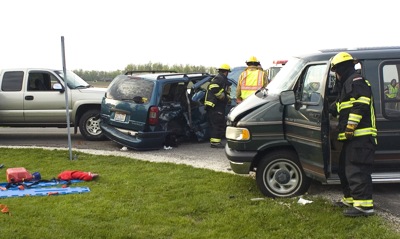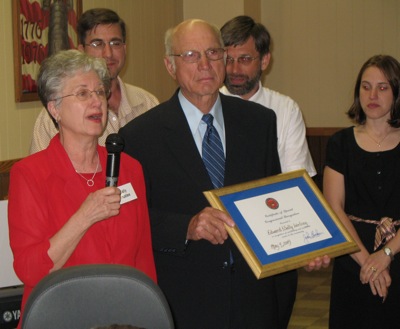Wednesday, May 6th, 2009
Carthagena Road work hits utility pole snag
By Shelley Grieshop
A half million dollar project to upgrade a portion of Carthagena Road this summer was temporarily foiled after the Mercer County Engineer's office discovered a costly obstacle: electric poles.
County commissioners Jerry Laffin and John Bruns on Tuesday opted to reject all six bids received for the roadwork after learning the cost to relocate numerous utility poles along the 4-mile stretch would reach more than $1 million. The expense would rest on the shoulders of the engineer's office, and that cost was not figured in the totals.
"We didn't allot that kind of money for this," county Engineer Jim Wiechart said.
In most cases, utility companies are obligated to move their poles at their own cost when road projects - particularly widening projects - are planned. However, in this instance, Dayton Power & Light in the 1940s acquired separate utility easements with the involved landowners. The easements allowed the company to put the poles just outside the county's existing right of way, Wiechart explained.
By law, the signed easements are worded to exempt the utility company from footing the bill for the relocation of the poles in the future, he said.
"We still have the legal right to ask the utility to relocate the poles but it would be at our own expense," he said.
Instead, the engineer's office recommended the poles remain in place and the project plan be altered. The commissioners later this week are expected to announce a new date for accepting and opening bids for the altered project.
Construction estimates likely will be higher, Wiechart said.
"This changes the scope of the work significantly," he said. "It impacts the type of work, which likely will impact the cost and the time to complete the job."
The work involves a stretch of Carthagena Road from Burkettsville-St. Henry Road to U.S. 127. Crews will perform shoulder widening, base stone widening, side ditch reconstruction and pipe and culvert replacements.
The job is partially funded by a $300,000, no-interest loan through the Ohio Public Works Commission. The remaining amount will be paid from the engineer's office budget.






